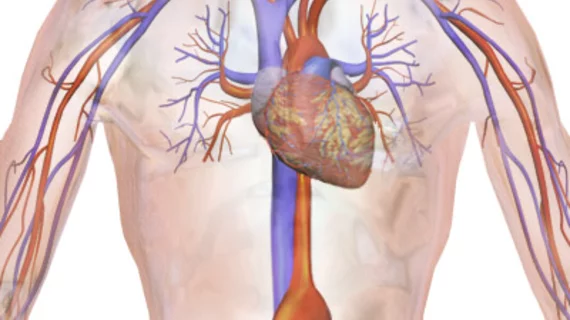SIIM19: AI can help radiologists detect AAA on CT scans
A deep neural network platform can help radiologists detect abdominal aortic aneurysms (AAAs) on CT images, and is especially helpful in clinically challenging cases, according to research presented last week at the SIIM annual conference.
Most AAA patients are asymptomatic, and feel no pain or discomfort—therefore their aneurysms are usually found incidentally, said Jen-Tang Lu, PhD, with Massachusetts General Hospital in Boston, during the conference. If these aneurysms grow, which they commonly do, they can rupture with mortality rates above 90%. Additionally, Lu noted, a mere 60% of AAAs are incidentally identified.
“The goal of this project is to leverage deep learning to increase the detection rate of incidental AAAs,” he said.
Lu and colleagues trained and tested their DeepAAA algorithm on 310 CT scans from 220 unique patients, dividing CTs into 50% contrast and 50% non-contrast.
The algorithm accurately segmented the aorta on both contrast and non-contrast CT images. DeepAAA averaged a Dice coefficient of 0.90 and scored a 0.91 for sensitivity and 0.95 specificity for detecting incidental AAA. It performed slightly better when analyzing non-contrast CT images and proved valuable in difficult cases that included blood clot in the aorta and on scans where the aorta boundary was unclear, Lu noted.
“Even for such a complex case it’s not a problem,” he told attendees.
DeepAAA also outperformed the average sensitivity of a radiologist for detecting two sizes of aneurysms and scored the same for identifying those greater than or equal to 50 millimeters, according to figures published in 2017 by the Journal of Vascular Surgery. However, Lu expressed reservations about the comparison.
“To be honest I don’t think that’s a fair comparison between radiologists and DeepAAA,” he said. “Finding embolisms is one of the many things radiologists need to do, while DeepAAA focuses on the aorta—of course it’s better.”
“That’ why we can collaborate with AI,” he added. “DeepAAA is always there, it’ a very good supporting tool, it’s just like a second set of eyes.”
The model did tend to underestimate the aorta by 2 mm, but, according to Lu, his team can adjust the parameters of DeepAAA’s detection to account for the discrepancy.
Lu said the DeepAAA project was funded by Nuance and Nvidia.

